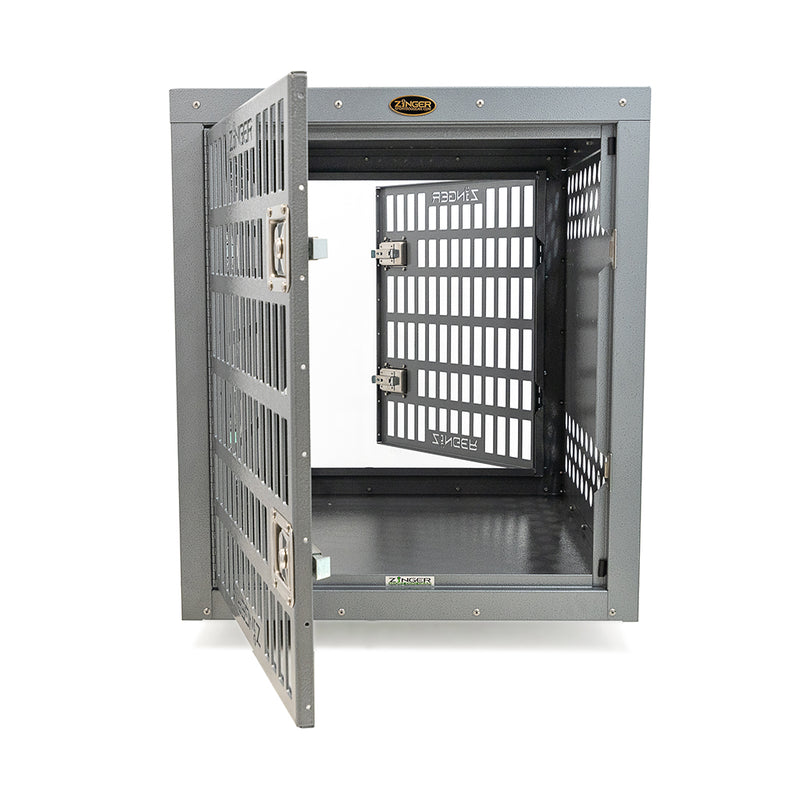Your Cart is Empty
Electronic Collars
Collars and Leads
Dog Tracking Systems
Dog Training
Bird Launchers
Hunting Dog Supplies
For The Hunter
Topical Flea and Tick Treatment for Dogs: How It Works
August 16, 2021 4 min read 2 Comments

When treating for flea and ticks, there are a few ways to administer the treatment. Treatment types range from shampoos, collars, medallions, topical, and oral treatments. In this article, we are going to discuss topical treatment, how it works, and how it compares to other types of flea and tick treatments.
What are topical flea and tick treatments?
Topical treatment, sometimes referred to as spot-on treatment, is arguably the most common method of treatment for fleas and ticks. These flea and tick medications are administered to the fur on the dog’s back, normally between the shoulder blades. This location is preferred because the dog is unable to lick the treatment area. This type of treatment product works by having the active ingredients enter the sebaceous glands. The sebaceous glands, found in the skin of most mammals, are responsible for lubricating the dog’s fur coat with sebum (skin oil). When the active ingredients are in the sebaceous glands, they are passed over the entire coat of the dog via these oils. Most topical treatments are effective on your dog for 30 days, and then will need reapplied to maintain protection from those troublesome fleas and ticks. Topical treatments are measured based on your dog’s weight and it is important to administer the correct amount to get the proper flea and tick protection. After applying the treatment, keep the dog out of water for 24 hours, after 24 hours the treatment becomes water proof.
How does topical treatment work against fleas and ticks?
Once the topical treatment is spread throughout the dog’s coat via the sebaceous glands, the active ingredients work as a pesticide that attacks the flea’s and/or tick’s nervous system. This causes these parasitic pests to lose the ability to feed, resulting in death. Topical treatments, like Certifect, also contain active ingredients that will also make any attached ticks to back out from the host before dying from starvation. This is great for preventing bacterial infections from the ticks dying while embedded. Some topical treatments also contain an active ingredient that contains an insect growth regulator that prevents the development of any eggs that may have been laid. It is important to remember that fleas can live up to 60 days in the environment, depending on conditions, such as humidity, temperature, and sunlight exposure. Consequentially, it may take more than 60 days for a flea infestation to be completely eliminated. With that said, it is important to keep up with your monthly topical treatments.
How do topical treatments compare to other flea and tick treatments?
In comparison to other types of tick treatments, most (if not all) topical treatments use the same active ingredients for flea and tick control. The major difference is how the dosage enters the dog. Flea and tick collars and medallions are worn around the dog’s neck, which slowly administers the medication to the dog over time. Collars and medallions are not recommended for dogs that will be in frequent physical contact with humans. Oral treatments are ingested by the dog and its active ingredients are released once in the dog’s digestive system. Oral treatments are only available via prescription by a veterinarian. Sprays are applied to the dog’s fur and act similarly to topical treatments. Although, instead of applying in one central location, like you would with topical treatments, the spray is applied all over the dog. Sprays prove to be more of a challenge because it is harder to regulate the amount of active ingredient(s) applied. Flea and tick shampoos are designed to kill any fleas and ticks that are currently on the dog. These shampoos can offer immediate relief from fleas and ticks, but do not have preventative qualities to keep fleas and ticks from becoming an issue again, unlike the aforementioned types of treatments.
Tips for using topical treatments:
- Make sure to only purchase a flea and tick treatment meant for the animal that you are treating. Flea and tick treatments for dogs could be toxic to cats and treatments for cats will underperform on a dog.
- Do not allow your dog to sleep with any humans until the treatment site has completely dried.
- Make sure to treat your dog according to the correct weight and sizing dose.
- Do not combine flea and tick treatments. This could cause your dog to be overdosed on the active ingredients, which can result in kidney and liver damage.
- For the first 24 hours following the topical treatment application, do not bathe or allow your dog to come in contact with water at the treatment site.
Topical Treatments Available at Lion Country Supply:
- Frontline Plus for Dogs
- K-9 Advantix II Flea and Tick Treatment
- Spectra Sure Plus IGR for Dogs
- Advantage II for Dogs
Conclusion
It is important to keep your dog treated for fleas and ticks, regardless of what form of treatment you decide to use. If you do choose to use topical treatments, it is paramount to use them correctly to ensure proper protection. For more on flea and tick prevention, check out Flea and Tick Prevention for Dogs, Tick Prevention Tips for Humans, and Preventing Ticks in Your House.
If you have any questions on flea and tick protection, please leave us a comment to this blog, give us a call at 1-800-662-5202, send us an email to service@lcsupply.com, or message us on social media!
Thank you for reading.
Michael Cassatt, LCS Director of Marketing2 Responses
Jerry Seevers
October 18, 2022
I appreciate your columns. I am part of a K9 search team in Texas and we get exposed to just about everything. This information is great to share with new and old handlers as we arm both are dogs and ourselves with information that keeps us safe and extends our capabilities. Thanks.
Leave a comment
Comments will be approved before showing up.
Subscribe
Sign up to get the latest on sales, new releases and more …
Featured Products

Subscribe
Sign up to get the latest on sales, new releases and more …




Gerald Babin
March 23, 2025
Hello
I just read your article “Topical Flea and Tick Treatment for Dogs: How It Works”
Very informative.
However, my vet who has G.S.H.P’s warned me that the topical application will negatively effect a dogs scenting ability and recommended I apply at least 7 days before I compete in field trials.
Perhaps a follow up on this and a warning be given if proven correct.
Cheers
Gerald